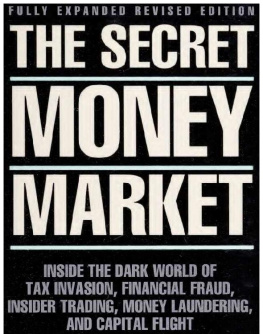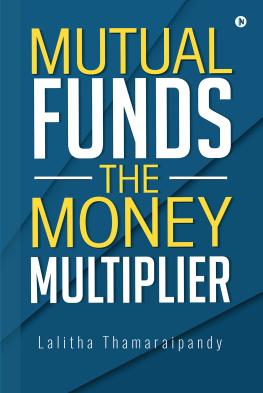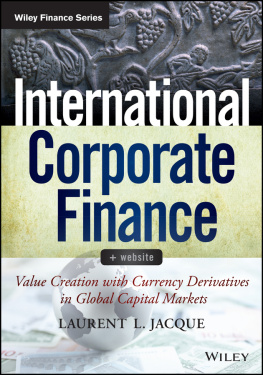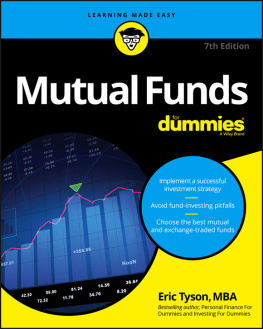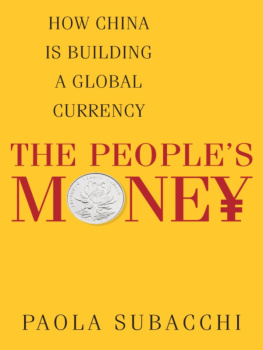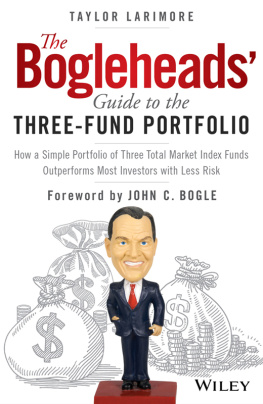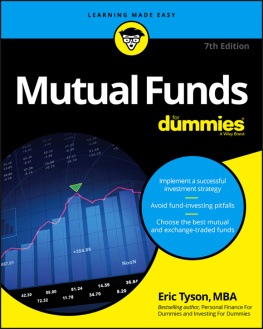Copyright 1990 by Ballinger Publishing Company. All rights reserved. No part of this publication may be reproduced, stored in a retrieval system, or transmitted in any form or by any means, electronic, mechanical, photocopy, recording, or otherwise, without the prior written consent of the publishers. Editions are not for sale in countries other than the USA, its dependencies, the Philippine Islands and Canada.
International Standard Book Number: 0-88730-392-7 (cloth)
0-88730-489-3 (paper)
Library of Congress Catalog Card Number: 89-45776
Printed in the United States of America
First published in Great Britain by Allen & Unwin 1985.
First published in Counterpoint by Unwin Paperbacks 1986.
Second edition published by Unwin Paperbacks, an imprint of Unwin Hyman Limited, in 1989. Ingo Walter, 1985,1986,1989
90 91 92 93 HC 9 8 7 6 5 4 3 2 1
Archive.org members may resolve poorly proofread pages by examing the original page images at http://archive.org/details/secretmoneymarke00ingo
Contents
Preface
1 The World of Secret Money
2 What is Secret Money?
3 Demand for Secret Money: Capital Flight, Bribery and Corruption
4 Demand for Secret Money: Tax Evasion, Smuggling and Insider Trading
5 Demand for Secret Money: Fraud
6 Demand for Secret Money: Money Laundering and Undercover Activities
7 Supply of Secret Money
8 Global Secrecy Havens
9 Combating International Financial Secrecy: Unilateral Initiatives
10 Combating International Financial Secrecy: Patterns of Cooperation and External Pressure
11 Consequences
12 The Outlook
Annex 1 Theory of International Financial Secrecy
Annex 2 Catalog of US Cases Involving Bank or Commercial Secrecy
References
About the Author
Back Cover
Preface
This book is about global financial flows that nobody is supposed to know abouttheir size, their nature, their causes, and their effects. It is about the behavior of people who want to keep financial information from others and are willing to pay for it. It is about people, institutions and countries that are happy to handle secret assets and keep the information to themselves, usually for a price. There is demand and there is supply, there are buyers and there are sellers.
Financial secrecy can be considered a business, one that can be analyzed in terms of the economics that underlie any business. It forms an industry that produces services people want and are willing to pay for, one that has its own players in a global marketplace. It is a somewhat curious industry, however, in that services are produced that contribute great value to some, yet are perceived as positively bad by othersso that the players are caught in a never-ending series of cat-and-mouse chases.
This book attempts to describe that industry, in all of its economic, political, social and personal dimensions. Consequently, economics forms the basic frame of reference for this book. Concepts of market analysis, macroeconomics, international trade, economic growth and international finance all find application here.
So do war stories and anecdotes. Nobody is anxious to talk about international financial secrecy, and there is little hard evidence available. Almost all first-hand information is confidential. What secondhand information exists depends for its accuracy on those who tell it. Like a jigsaw puzzle with many missing pieces, isolated facts and observations have to be assembled in an effort to discern the structure of the whole.
The first edition of Secret Money was published in 1985. In the intervening years, an amazing array of new cases have arisen, ranging from the Marcos story case in the Philippines to the Iran-Contra scandal in the United States, from capital flight and the international debt crisis to the insider trading and money laundering of the mid-1980s. This second edition of Secret Money tries to capture these developments and incorporates them into the framework developed in the first edition of the book. Not surprisingly, the Tit' is quite good.
I am grateful to a number of individuals with whom I have discussed problems of financial secrecy over the years, most of whom don't want to be identified. In addition, I am particularly grateful to Ms Amanda Tealby Lomas, who pulled together the updates for the various chapters and made a very significant contribution to the completion of this edition. Ms Ann Rusolo capably and efficiently handled the often complex word processing. Financial support was provided by the INSEAD International Financial Services Programme in Fontainebleau, France'
INGO WALTER New York City September 1988
1 The World of Secret Money
Few aspects of international finance are more fascinating than secrecy. Images flash through the mind of suitcases crammed with currency crossing national boundaries, of close-mouthed couriers slipping easily into and out of airports, hotels and banking offices, of expatriates living handsomely along palm-shaded beaches with no visible means of support, of churning money laundries and quiet slush funds. All find their parallels in the real world. But there are many other, less dramatic but much more important images as well: the tax evader skimming unreported income into an offshore account; the briber shuffling funds to the bribee; the violator of securities laws squirreling away illegal profits; the insecure politician or government official building a retirement fund abroad; the businessman fleeing his creditors; the husband fleeing his wife; the law-abiding citizen fleeing exposure to political or economic risk. All are players in the global financial secrecy game.
International financial secrecy is a subject of enduring and perhaps growing importance for the international economy, one that is well worth exploring. With a little imagination, the conventional tools of economic analysis can yield some useful insights into an otherwise rather murky subject. As we shall see, it is largely a matter of supply and demand.
The demand for financial secrecy
Who needs or desires financial secrecy? Practically everybody. The demand for financial secrecymeaning non-disclosure of financial information that people are willing to pay forarises from at least five more or less distinct sets of motivations: personal, business, political fiscal and criminal. Each has a unique pattern of demand that helps define the overall structure of the global 'market' for financial secrecy A personal desire to keep financial affairs confidential maybe a purely domestic matter. Surveys reveal an amazing amount of financial secrecy between husbands and wives, perhaps to prevent 'irresponsible' household spending behavior or to avoid unfavorable property settlements in the event of divorce. Parents often keep financial secrets from their children, in the hope of inducing proper motivation and greater effort. Moneyed people withhold financial information from their prospective heirs in the hopes of keeping the vultures at bay. In an employee's dealings with his employer over salary matters, or a shopper's haggling with salesmen over purchases of goods or services, it is usually worthwhile not showing too many financial cards. And there is the matter of personal preference. Individuals feel more or less strongly that personal finances are nobody else's business, that they have a basic 'right' to financial privacy. Nor is it wise to attract thieves, kidnappers, con-artists and other social parasites by unnecessary financial disclosure. Personal financial secrecy usually remains in substantial compliance with the law, and in many countries has been well served by long-standing traditions of banking confidentiality. Indeed, it is often regarded as a cornerstone of personal liberty.

